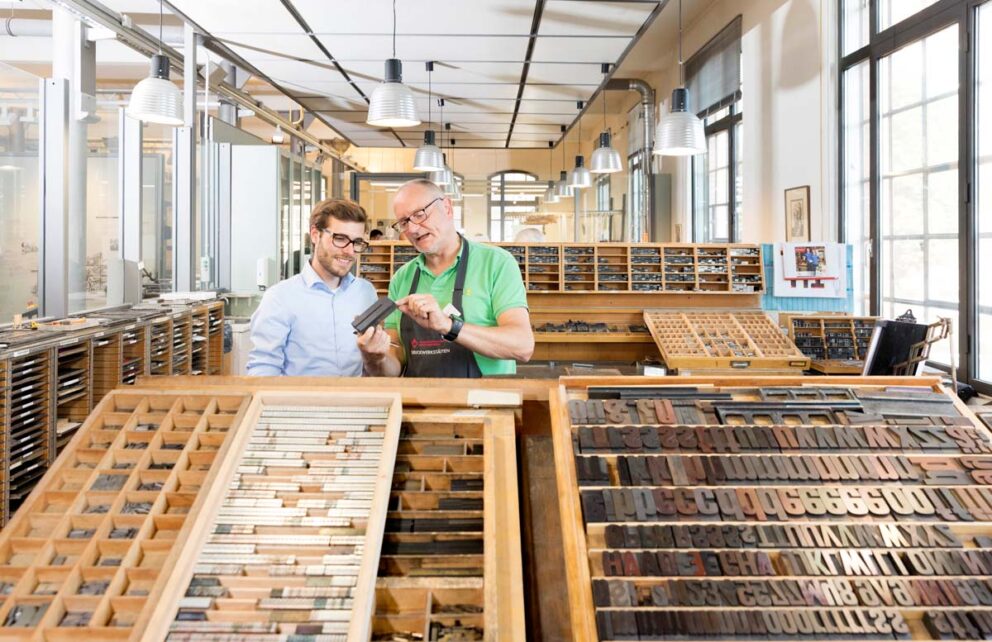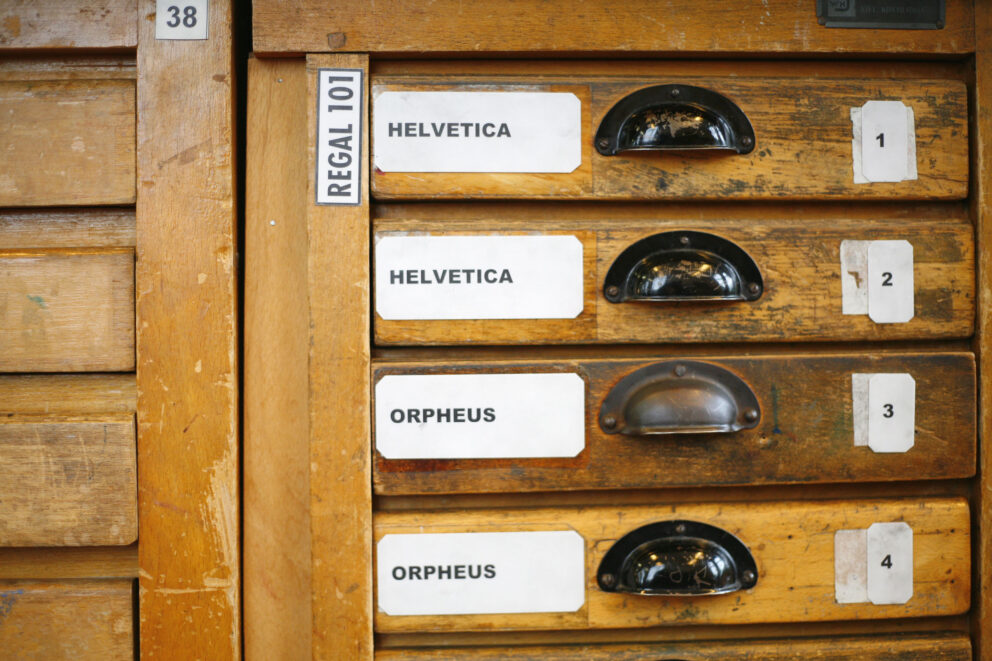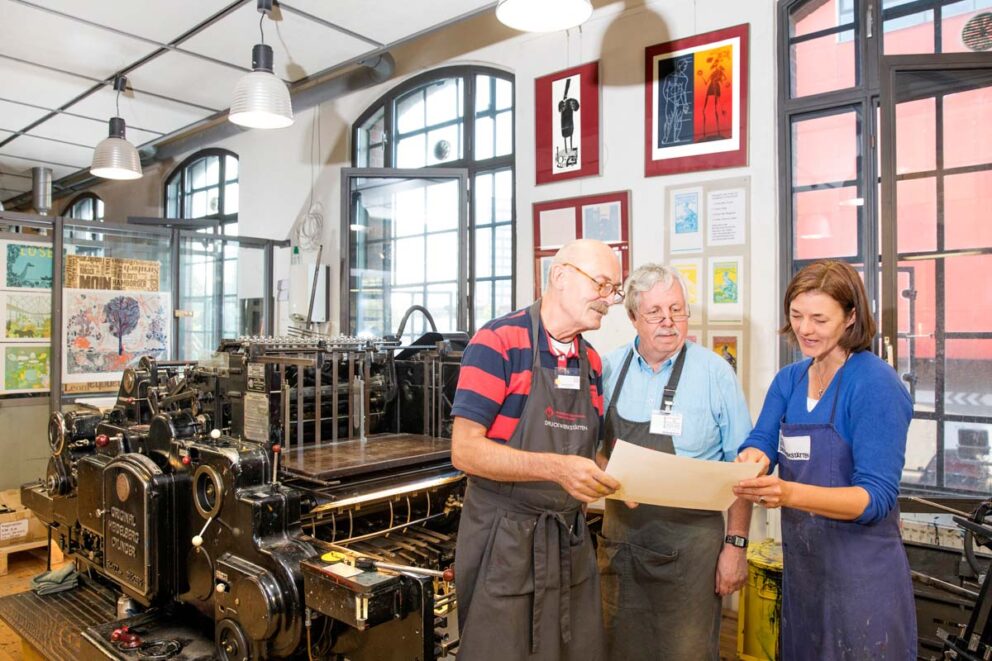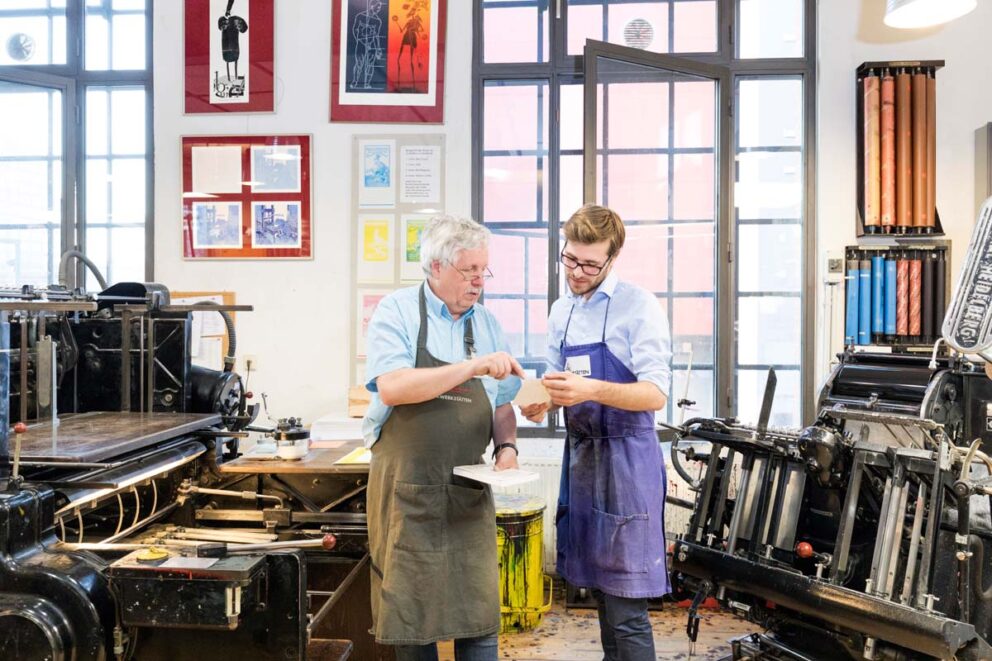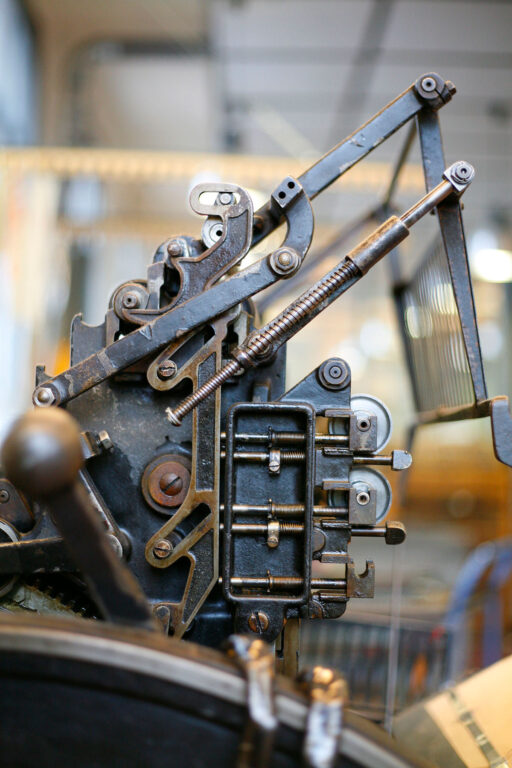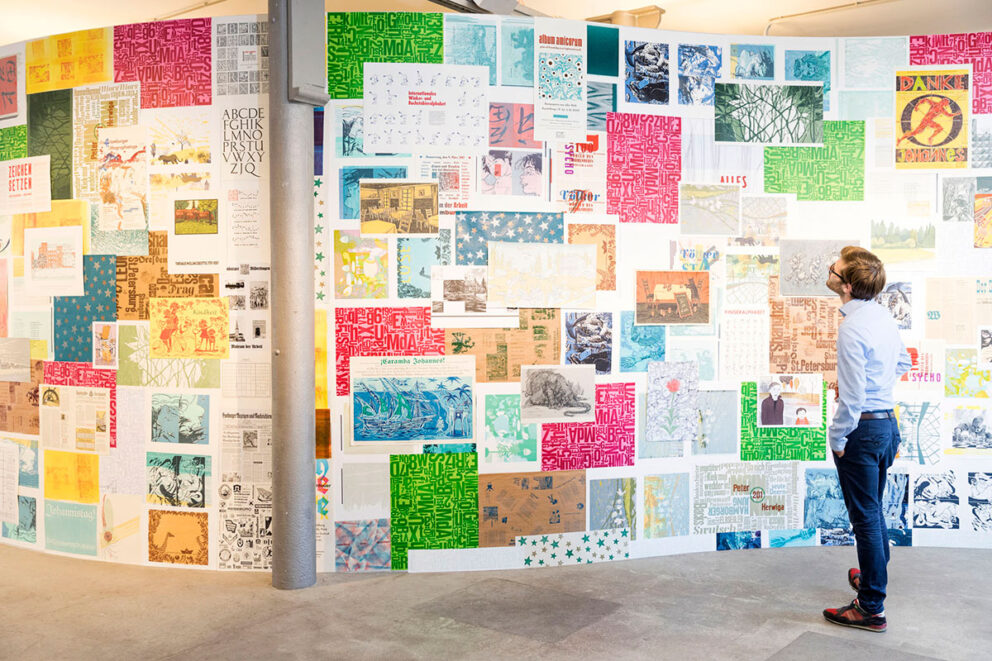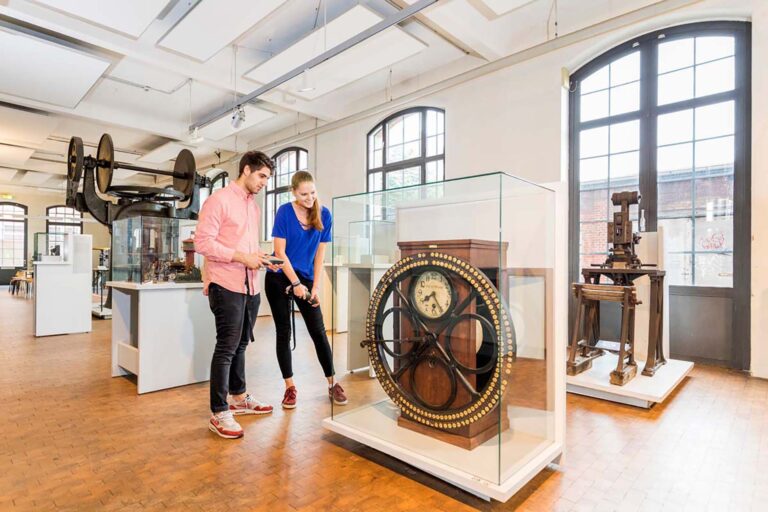
Permanent exhibition in the Museum of work
Setting up the forme, inserting and removing the paper, and monitoring the machine all remained tasks that were performed manually by workers. The incredible speed at which they had to work is specifically illustrated by the job of feeding the paper into the press, with up to 2,200 sheets needed per hour; this can be fully appreciated when seeing the Autodux press (built in 1962), which has a folding sheet-feeder, in operation. Feeding the paper into the press was traditionally a woman’s job in the printing trade, illustrating the clear gender divide that dominated in the workplace.
The centrepiece in this section is a Columbia press, a cast-iron, hand press where the handle and the counterweights helped to increase the printing pressure. It was built around the same time as the first high-speed presses and is therefore more of a niche product. It was probably preserved on account of its magnificent appearance: it is lavishly decorated with eagles, cornucopias, figures of Minerva, dolphins and caducei, i.e. all motifs from classic literature that symbolised the rich tradition of the book printer which flourished at the same time as high-speed presses appeared on the market and started posing a threat to their very existence. This, and other responses to change, can be traced in the documentation display. The museum also has a separate pressroom which is equipped with a Heidelberg rotary press and a Heidelberg platen press.



